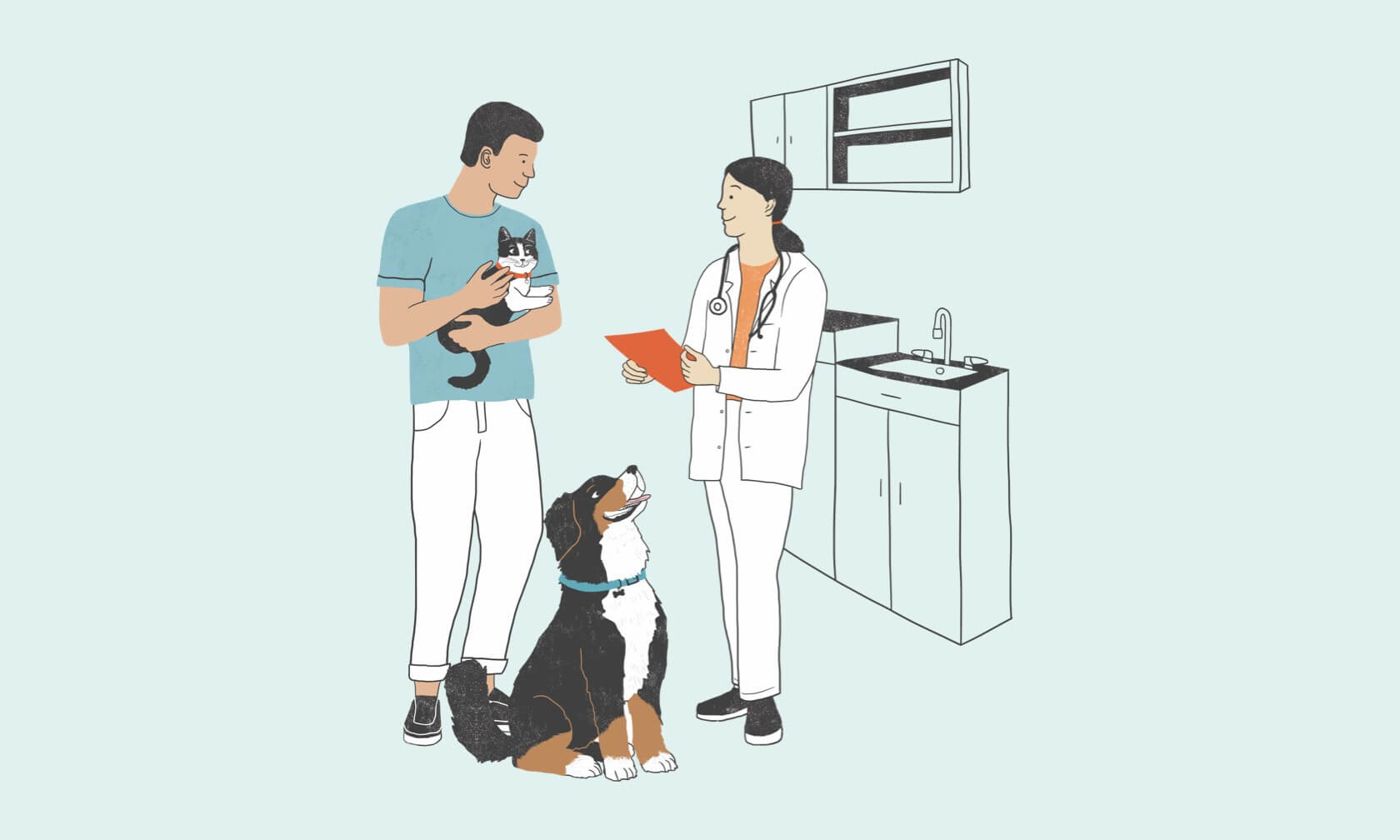Anytime you go to the doctor, one of the first things they do is check your blood pressure. Why? Because high blood pressure, also called hypertension, is a potentially life-threatening condition in human medicine.
Most dogs live healthy, lower stress lives than we do. Does this mean they don’t get high blood pressure? Unfortunately, no. High blood pressure is something dogs and humans can have in common. If it goes untreated, it can damage their organs. Understanding high blood pressure and how to catch and treat it are your best weapons to protect your pup.
Symptoms of High Blood Pressure in Dogs
If you notice your dog showing any of the following signs, seek veterinary care as soon as possible:
- Sudden blindness
- Persistent dilated pupils
- Abnormal back and forth movement of the eyes
- Blood inside the eye, in the area between the cornea and iris
- Nosebleeds
- Blood in urine
- Weakness
- Disorientation
- Abnormal movement when walking
- Circling when walking
- Head tilt
- Seizures
- Heart murmurs or abnormal heart rhythm

What is High Blood Pressure in Dogs?
Blood pressure is an important gauge used to evaluate the force and rate of a dog’s heartbeat and the elasticity and diameter of the arteries. When blood pressure measurements are continually higher than normal, the condition is referred to as high blood pressure (hypertension). This means that your dog’s blood vessels are more rigid and have decreased ability to expand and recoil. The result is decreased blood flow, and it can harm their kidneys, heart, eyes, nervous system, and other organs.
How are Dogs Diagnosed with High Blood Pressure?
The normal blood pressure for most dogs falls in the range of 110/60 to 160/90. Ideally, this measurement is taken when your dog is calm and experiencing little stress. It can be taken either by a pressure cuff attached to a blood pressure monitor machine or with a pressure cuff and the Doppler probe using ultrasonic waves to hear blood flow (similar to how’s it’s measured on people using a pressure cuff and a stethoscope).
Your dog will generally be diagnosed with high blood pressure if they have systolic pressure (the first number) continually above 165 or a diastolic pressure (the second number) above 100.
Treatment for High Blood Pressure in Dogs
Identifying the underlying cause of the high blood pressure, if there is one, determines what course of treatment is needed. When any underlying medical issues are appropriately treated and managed, blood pressure can often be brought back to normal levels with medication and proper nutrition. Finding the right combination of medications and/or nutrition adjustments that work for your dog may take trial and adjustment based on monitoring. Work closely with your veterinarian for the best results.
Regularly monitoring blood pressure, routine blood work, and veterinary visits are important for managing all cases of high blood pressure.
What Causes High Blood Pressure in Dogs?
If high blood pressure is the main issue and no underlying medical conditions are present or can be identified, it’s called primary hypertension.
The majority of high blood pressure cases in dogs are due to underlying diseases, making it secondary hypertension. Some of these medical conditions include:
- Hyperadrenocorticism (Cushing’s disease)
- Hyperthyroidism
- Pheochromocytoma (adrenal gland tumors)
- Acromegaly (overproduction of growth hormones)
- Polycythemia (abnormal increase in red blood cell numbers in the body)
Your Dog’s Life with High Blood Pressure
Your dog’s quality of life and life expectancy will be determined by the underlying cause of the high blood pressure. The conditions that may contribute to high blood pressure can often be managed with diet, medications, and supplements. The risks of potential complications are minimized when blood pressure is properly managed.
Your dog should be monitored routinely as recommended by their veterinarian, with some dogs needing blood pressure checks every few months. This allows for adjustments in medications to be made sooner to maintain better control over blood pressure. It also allows for monitoring of current medical issues and earlier intervention if other medical issues arise.
ZPC-01939R1





